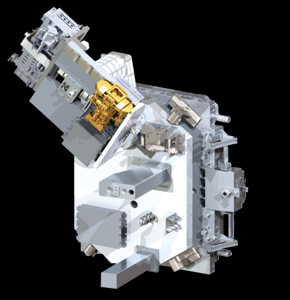Science

image courtesy NASA/
The Total and Spectral Solar Irradiance Sensor (TSIS-1), first selected in 1998 for the National Polar-orbiting Operational Environmental Satellite System (NPOESS), re-manifested in 2010 on the NOAA-NASA Joint Polar Satellite System (JPSS), then the NOAA Polar Free Flyer, but in the end launched to the International Space Station on December 8, 2017.
TSIS-1 acquires measurements of total and spectral solar irradiance (TSI and SSI, respectively). TSI is required for establishing Earth’s total energy input while SSI is needed to understand how the atmosphere responds to changes in the sun’s output. Solar irradiance is one of the longest and most fundamental of all climate data records derived from space-based observations.
TSIS-1 provides continuation of the Total Irradiance Monitor (TIM) and the Spectral Irradiance Monitor (SIM), currently flying on the NASA Solar Radiation and Climate Experiment (SORCE). Launched in 2003, SORCE is now more than ten years beyond its prime-mission lifetime. The launch failure of the NASA Glory mission in 2011, coupled with diminished battery capacity on SORCE and delays in the launch of TSIS-1 have put the continuous 38-year TSI record at risk. In 2012, a plan to maintain continuity of the TSI calibration scale between SORCE and TSIS-1 was rapidly implemented through the USAF Space Test Program STPSat-3 that launched in late 2013 as TCTE: the “Total solar irradiance Calibration Transfer Experiment” . TCTE has been taking TSI measurements at various cadences since. An overlap period is planned when both SORCE and TSIS measurements are taken to cross-calibrate the two data sets and extend the data records for TSI and SSI.
